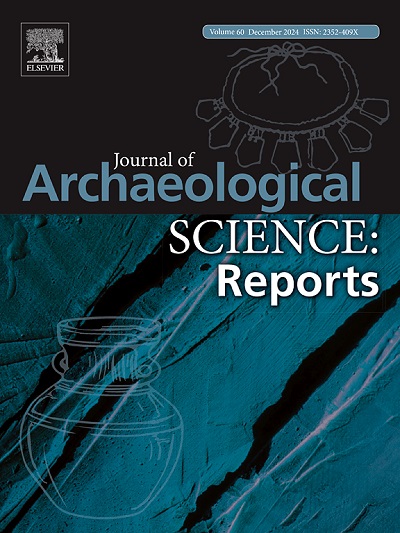Rethinking strontium variability beyond mobility: Strontium isotope and concentration analysis of cremated remains from Tienen (Gallo-Roman Belgium, 1-4th c.AD)
IF 1.5
2区 历史学
0 ARCHAEOLOGY
引用次数: 0
Abstract
Strontium isotope analysis (87Sr/86Sr) is a common tool for the study of mobility in archaeological populations, and has often been used in Roman contexts, to deliver more information on the mobility of the inhabitants of the Roman Empire. However, the practice of cremation within the empire and the methodological bias towards inhumation long pushed aside the study of populations who practiced cremation. Additionally, it is becoming more and more apparent that additional factors can have an influence on 87Sr/86Sr values, besides mobility, which calls for a careful reassessment of the results. This study looks at the population dynamics in the Gallo-Roman vicus of Tienen, through strontium isotope (87Sr/86Sr) and concentration ([Sr]) analyzes of a total of 147 cremated remains. While [Sr] values point to a general consumption of salt throughout the occupation of the vicus of Tienen, 87Sr/86Sr results point to limited mobility, changes in land use, and/or importations for food as an explanation for values. This study contributes to a growing field of research on mobility studies on cremations within a Roman cultural context.
超越迁移率的锶变化的再思考:Tienen(高卢罗马时期的比利时,公元1-4年)火化遗骸的锶同位素和浓度分析
锶同位素分析(87Sr/86Sr)是研究考古人口流动性的常用工具,经常用于罗马背景,以提供更多关于罗马帝国居民流动性的信息。然而,帝国内部的火葬实践和对人葬的方法论偏见长期以来一直将对实行火葬的人口的研究搁置一边。此外,越来越明显的是,除了流动性之外,其他因素也可能对87Sr/86Sr值产生影响,这要求对结果进行仔细的重新评估。本研究通过对147具火化遗骸的锶同位素(87Sr/86Sr)和浓度([Sr])分析,研究了Tienen高卢罗马vicus的种群动态。[Sr]值表明,在整个天津地区的占领过程中,盐的普遍消耗,87Sr/86Sr的结果表明,有限的流动性、土地利用的变化和/或食物的进口可以解释盐的价值。这项研究有助于在罗马文化背景下对火葬的流动性研究的一个日益增长的领域。
本文章由计算机程序翻译,如有差异,请以英文原文为准。
求助全文
约1分钟内获得全文
求助全文
来源期刊

Journal of Archaeological Science-Reports
ARCHAEOLOGY-
CiteScore
3.10
自引率
12.50%
发文量
405
期刊介绍:
Journal of Archaeological Science: Reports is aimed at archaeologists and scientists engaged with the application of scientific techniques and methodologies to all areas of archaeology. The journal focuses on the results of the application of scientific methods to archaeological problems and debates. It will provide a forum for reviews and scientific debate of issues in scientific archaeology and their impact in the wider subject. Journal of Archaeological Science: Reports will publish papers of excellent archaeological science, with regional or wider interest. This will include case studies, reviews and short papers where an established scientific technique sheds light on archaeological questions and debates.
 求助内容:
求助内容: 应助结果提醒方式:
应助结果提醒方式:


